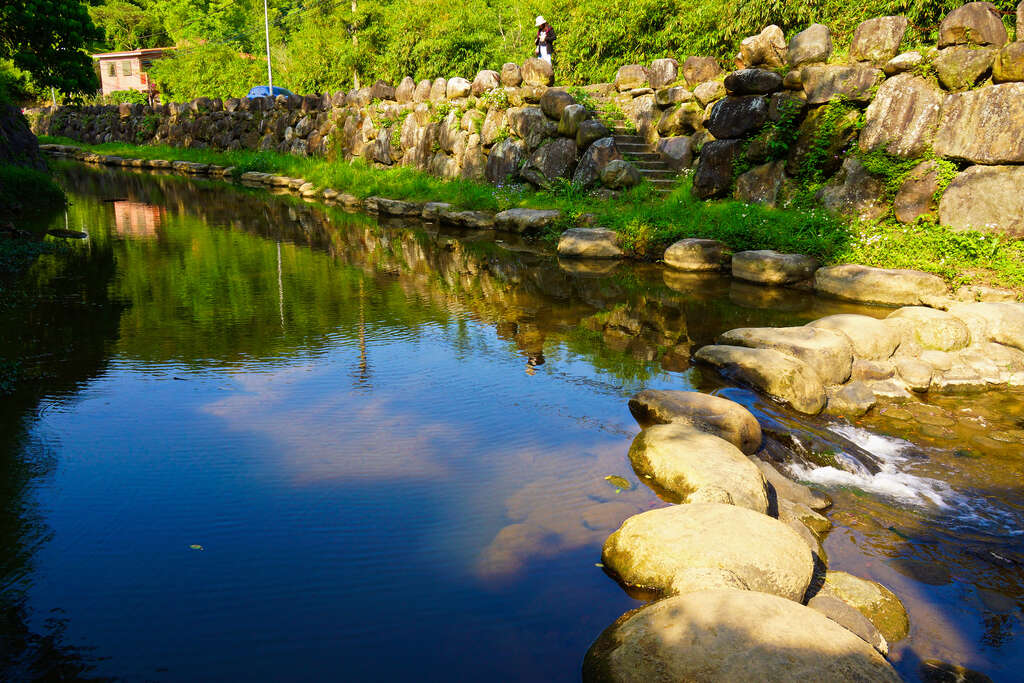Wuzhishan Mountain Range, Bailu Mountain, Kangle Mountain, Mingju Mountain Qingshan Trail Introduction
Bailu Mountain, Kangle Mountain, and Mingju Mountain are surrounded by the Dahu Park and ancient trees, forming a three-segment hiking trail that is often frequented by residents of Neihu District for exercise, fitness, and gatherings. **Bailu Mountain Trail**: Located next to Dahu Park in Neihu, this trail is known for its winding path, which leads to a disorientation of direction for hikers halfway through, so a compass is quite useful. The valley of Bailu Mountain Trail is home to a rich variety of ancient ferns, such as the bamboo tree and the lotus-like plant, while other sturdy species like the acacia and certain junipers also thrive, releasing refreshing phytoncides. **Kangle Mountain Trail**: The trail starts beside the Huangshi Temple on Section 5 of Chenggong Road in Neihu. This shaded path is a favorite among morning walkers, and its highest point offers the best view of Dahu Park. Olive and banyan trees along the way serve as key landmarks, particularly the ancient banyan tree with a trunk circumference of 4 meters, affectionately known as "Uncle Banyan" by the locals. **Mingju Mountain Trail**: This trail preserves much of its original forest character, featuring three majestic banyan trees with sizes comparable to that of Uncle Banyan on Kangle Mountain. It is a narrow pathway rich in countryside atmosphere. Hikers might combine their trip to Mingju Mountain with visits to Bailu Mountain and Kangle Mountain; reaching the exit of Mingju Mountain leads directly to the Neigou Ecological Exhibition Hall, making it an ideal weekend leisure activity. Exploring the original forest is full of fun. Why not embark on a trail adventure this weekend? Start at Bailu Mountain, where the trailhead is a path that might feel too close to the city, winding past wasteland and vegetable plots, with remnants of mixed scents in the air, evoking a longing for the refreshing phytoncides. The Bailu Mountain Trail, also known as the "Fifty Bends Trail," leisurely winds up with gentle steps, but the turns may cause a loss of direction along the way. However, you will surely discover various unique dead trees along the trail, the majority being the mountain ramie species, which are uncommon in the near-suburban remnants of forest in Taipei. The ancient ferns in the valley, like bamboo trees and lotus-like plants, can grow up to one or two stories high, a sight rarely seen in Neihu. On the southern slope, there are also robust acacia and juniper trees. The towering trees emit refreshing phytoncides, rejuvenating you as if you've drawn energy from the forest. Both Kangle Mountain and Mingju Mountain also boast ancient trees. The Kangle Mountain Trail features the largest olive tree in Taipei City, a century-old giant with a circumference of nearly 300 centimeters. This tree stands majestically beside the relics of the Mount Hai Temple, which is said to face demolition due to its illegal status; yet, the ancient olive tree has withstood countless storms through the years, still thriving. As you leave behind the old olive tree and ascend, the concrete path gives way to rustic tree roots and dirt paths. In the tranquil forest, you will pass a lush banyan tree, a landmark of Kangle Mountain Trail, known locally as a "sacred tree." With a trunk circumference of about 4 meters, this venerable banyan is also a long-lived member of the family. On Mingju Mountain, there is another banyan tree comparable in size to Kangle Mountain's sacred tree. This narrow trail, rich in rural ambiance, features two more banyan trees near the entrance and mid-way, which, although their ages are indeterminate, stand as significant landmarks along the less expansive route. **Scenic Views**: The Wuzhi Mountain Range, located in the northeast of the Taipei Basin, offers both unique terrain and climate. It serves as the outlet where monsoons enter the plains through the Keelung River Valley and acts as a precursor to the surrounding mountain ranges. Given the compression of two ecological features, the area is especially rich in species, explaining the serene environment and dense forests despite the relatively low elevation of the three hills. Kangle Mountain, at half the height of Bailu Mountain, is a captivating vantage point to admire Dahu Park, which lies at the foot of Bailu Mountain. Meanwhile, the summit platform of Bailu Mountain provides views not only of the nearby Dahu Park and Wuzhi Mountain Range but also extends toward Xizhi and Keelung. Nearby is a simple hut and a pebble path with unrefurbished earth, contrasting sharply with the neatly stone-structured pathways preceding and following it. However, the first rest pavilion on Bailu Mountain appears at the initial curve of the "Fifty Bends," unlike Kangle Mountain, where the rest area called "Shanshui Pavilion" is only found at the end of the trail. Given the short distance between the two segments, there are adequate rest spots available at both summits. As for the originally narrower Mingju Mountain Trail, walking to the exit allows you to relax by the Neigou River, listening to the soothing flow of the water, washing away your fatigue for an even more refreshing experience.





























